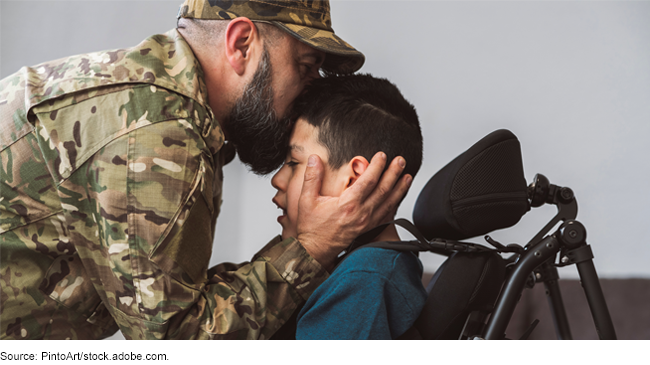Special Education: DOD Programs and Services for Military-Dependent Students with Disabilities
Fast Facts
The Department of Defense has support programs for military families with children with disabilities in K-12 schools. For example, school liaisons help families navigate special education and other services.
Through 2 programs, DOD provides funding to school districts that serve substantial numbers of military-dependent students. One program supplements a district's general funds—with no requirements on how the money is spent. The other program provides funds to support military-dependent children with severe disabilities. School districts must apply for the funds and student eligibility for this program varies by state.

Highlights
What GAO Found
A variety of Department of Defense (DOD) programs support military families who have children with disabilities in preK-12 schools. School Liaisons are the primary contacts for military families with preK-12 students who seek support, including special education issues. Four DOD officials told GAO that it is challenging to connect with families who are unaware of School Liaison services. DOD recently implemented an agency-wide communications plan, including the use of social media, to highlight the School Liaison program (see figure). Also, in response to recent congressional direction, all four armed services expanded special education legal support available to families having children with disabilities.
Figure: Image from Military OneSource Event Highlighting the School Liaison Program

Source: Department of Defense (DOD), Military OneSource ( www.militaryonesource.mil ) ǀ GAO22105015
Note: DOD refers to Military OneSource as its “24/7 gateway to trusted information, resources, and confidential help.”
DOD financially supports school districts that serve substantial numbers of military-dependent students through two programs:
- DOD Impact Aid Supplemental Assistance funds typically supplement school districts' general funds, according to school district officials. These funds are not required by statute to be used for specific purposes or to be targeted directly at supporting military-dependent students.
- Children with Severe Disabilities funds (CWSD) are provided to school districts to reimburse them for costs incurred to provide eligible children with disabilities a free appropriate education. School districts must apply for CWSD, a process some school officials and advocates described as time consuming. Because school district eligibility for CWSD varies by state and a child's special education services may vary by state, any given child's expenses may not be eligible for reimbursement in every school district that child attends.
Why GAO Did This Study
Children in U.S. military families may transfer schools nine times, on average, before they graduate from high school. These moves may be especially challenging for children with disabilities and their families, as special education services provided under the Individuals with Disabilities Education Act—the primary federal special education law—must be re-established with each new school. Sections 589G and 589H of the William M. (Mac) Thornberry National Defense Authorization Act (NDAA) for Fiscal Year 2021 include provisions for GAO to examine and report on a range of military children's education issues.
This report provides information on two broad topic areas: (1) DOD programs that offer support to military families having children with disabilities; and (2) DOD programs that support school districts that serve military families.
GAO analyzed data on DOD Impact Aid programs. GAO also (1) held four discussion groups with DOD officials, representing all four military services, responsible for providing support to military families with children with disabilities; (2) interviewed officials at six school districts, selected based on their proximity to military installations and eligibility for certain federal funds; and (3) interviewed officials from DOD and representatives of national advocacy groups for military children. GAO also reviewed relevant federal laws, regulations, and guidance.
For more information, contact Jacqueline M. Nowicki at (617) 788-0580 or nowickij@gao.gov.
